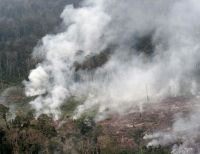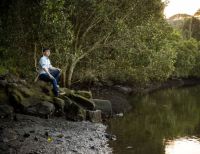The current 35 degrees Celsius wet-bulb temperature limit recommended for human survival is conservative as it doesn’t take into consideration individual variables or how humans live and work in the heat, according to new research led by the University of Sydney and Arizona State University.
The modelling study, published in Nature Communications, proposes a new human-centred physiological approach for assessing survivability and liveability in the heat.
The wet-bulb temperature limit for human survival, indicates the maximum combinations of temperature and humidity that humans can tolerate without suffering inevitable heat stroke over a fixed duration of exposure. This measurement has been in use for over a decade, but researchers say there needs to be a rethink.
“The idea is that you could survive for up to six hours at that level of heat exposure,” said first author Associate Professor Jennifer Vanos in the School of Sustainability at Arizona State University.
“That number really oversimplifies what happens physiologically in the body when your body is exposed to that temperature, and it doesn’t account for other important variables like age or other vulnerability factors.”
Associate Professor Vanos said the commonly used wet-bulb temperature for human survivability assumes the person is indoors or shaded, unclothed, completely sedentary, fully heat acclimatised and of an average size.
However, these assumptions do not align, in most cases, with how people navigate the summer months.
The study models scenarios that adjust for factors such as humidity, age, activity level and sun exposure, and provides a range of safe wet bulb temperatures based on a series of characteristics.
Senior author Professor Ollie Jay from the University of Sydney’s Heat and Health Research Incubator said it was important to not just understand how people could survive, but rather what conditions allowed people to still be active, outdoors and living their life.
“These combined perspectives allow for a cohesive understanding of exactly how climate outcomes can impact people on the physiological and biophysical level,” said Professor Jay.
“The existing wet-bulb temperature estimate of 35 degrees Celsius is used very commonly, with one example being the Intergovernmental Panel on Climate Change report. These kinds of reports can shape policy efforts, but they are using a model for heat that is a very conservative estimate of what the impacts are going to be on humans.














